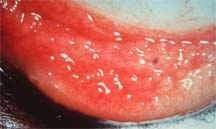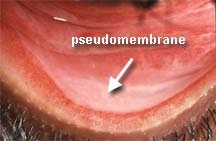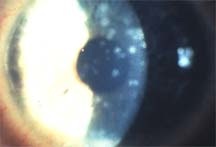|
Epidemic Keratoconjunctivitis
Are your eyes watery and irritated? Do your eyes look very red? Have you recently had a cold or have you been exposed to someone with a red eye? You may have epidemic keratoconjunctivitis (EKC). EKC infections are frequent and classic causes of viral conjunctivitis. The “kerato-“part of the condition refers to the infection’s presence on the cornea, the transparent tissue in front of the colored part of the eye. The conjunctivitis part of the condition refers to the tissue covering the white part of the eye, which often becomes red with infection or inflammation. What are the signs and symptoms of Epidemic Keratoconjunctivitis?
Signs and symptoms include: 
subconjunctival hemorrhages (blood under the conjunctiva). 

What can you do for your Epidemic Keratoconjunctivitis?
Remember that EKC is very contagious. Make sure to minimize the risk of infecting your other eye if it is still white, and minimize the risk of infecting others. When you use a tissue to dry your watery eye, always discard the tissue after one use. Change towels and pillow cases daily. Frequently wash your hands. Because EKC is viral in causation, you can think of it as a “cold” in the eye. Just like you would not be given antibiotics for a cold (unless you had strep throat), your eye doctor will not give you antibiotic eye drops for EKC unless there is evidence of secondary bacterial infection. Treatment is primarily supportive. Your eye doctor will recommend cold compresses to reduce the swelling of the eyelids and lubricating drops to soothe the eyes. Just like you would use decongestants to help you feel better from a cold, you may use a decongestant eye drop temporarily for the redness. There has been no demonstrated effective antiviral eye drop for use in EKC. The more severe signs of EKC such as pseudomembrane formation, chemosis, or corneal infiltrates make the use of steroid eye drops necessary. Remember whenever you are on steroids, whether as an eye drop eye drop or in pill form, you must wean the use of the steroids gradually. Your eye doctor will give you a schedule to taper the drops. |




